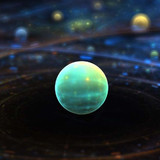INDI Library v2.0.7 is Released (01 Apr 2024)
Bi-monthly release with minor bug fixes and improvements
Custom driver for unidimensional fluxes (radio/photons)
- Jasem Mutlaq
-

- Away
- Administrator
-

Replied by Jasem Mutlaq on topic Custom driver for unidimensional fluxes (radio/photons)
Please Log in or Create an account to join the conversation.
Replied by Ilia on topic Custom driver for unidimensional fluxes (radio/photons)
I'll add the minimum required in a base class for monodimensional detectors (like Detectors class), then some sub-class could be "Analog Detectors" and "Pulse Detectors" (general, because one could use PMTs or APDs, or else Radio receivers).
Ilias.
Please Log in or Create an account to join the conversation.
Replied by Ilia on topic Custom driver for unidimensional fluxes (radio/photons)
Added also two files: indidetector.cpp and indidetector.h.
All is provvisory, I successfully compiled it, but it misses many things, still incomplete, but it is a start.
Ilias.
Please Log in or Create an account to join the conversation.
- Jasem Mutlaq
-

- Away
- Administrator
-

Replied by Jasem Mutlaq on topic Custom driver for unidimensional fluxes (radio/photons)
Please Log in or Create an account to join the conversation.
Replied by Ilia on topic Custom driver for unidimensional fluxes (radio/photons)
-Bandwidth (Hz, number)
-Observed Frequency (Hz, number)
-Sample Frequency (Hz, number)
-Bits per Sample (8, 16, 32, Number)
-Capture Duration (Sec, Number)
-Capture (blob, captured data, length=CaptureDuration*SampleFrequency[*Bpp])
---
I personally would add these ones, since the receiver I'm about to buy seems to read
-BufferSize/Heartbeat (Number, for framed input)
-Raw wave/Intensity (Switch - maybe unnecessary as it can be done in hardware)
-Spectrum1 (Blob)
-Small library* for FFT, Graphs, imaging and statistics into:
-Render1 (Blob)
[edit]
*: this library would be useful also for photometry using CCDs on variable objects.
Let me know your opinion,
Ilias.
Please Log in or Create an account to join the conversation.
- Jasem Mutlaq
-

- Away
- Administrator
-

Replied by Jasem Mutlaq on topic Custom driver for unidimensional fluxes (radio/photons)
What small library do you have on mind?
Please Log in or Create an account to join the conversation.
Replied by Ilia on topic Custom driver for unidimensional fluxes (radio/photons)
-Fourier transforms.
-Wavelets.
-Autocorrelation.
-Convolution/Deconvolution.
-Here the guiding algorithm could find place.
-Notch/Band pass filters.
-Others.
I collected most of these function into a C# library called ADPASDK (not well documented), which is part of my software, but I'd be happy to port them to INDI.
Ilias.
Please Log in or Create an account to join the conversation.
- Jasem Mutlaq
-

- Away
- Administrator
-

Replied by Jasem Mutlaq on topic Custom driver for unidimensional fluxes (radio/photons)
Please Log in or Create an account to join the conversation.
Replied by Ilia on topic Custom driver for unidimensional fluxes (radio/photons)
Ilias.
Please Log in or Create an account to join the conversation.
- Radek Kaczorek
-

- Offline
- Moderator
-

- Posts: 983
- Thank you received: 375
Replied by Radek Kaczorek on topic Custom driver for unidimensional fluxes (radio/photons)
PS. I think, it would be good idea to take GNU Radio into consideration
Please Log in or Create an account to join the conversation.
Replied by Ilia on topic Custom driver for unidimensional fluxes (radio/photons)
Instead of reaching raster high-speed fluxes one could log timestamps of pulses, or timing differences between peaks of waves. I studied a way to achieve such timing resolutions, however. Possible solutions could be Hydrogen Masers (very expensive) or Rubidium Standards. These clock types are really performant, keep in mind that Rubidium standards are the atomic clocks that the GPSs are equipped with.
The problem is how to log the pulses or waves. Since photon pulses are random one could use a TDC to keep logging the delays between pulses with a resolution of some picoseconds. There are also FPGA implementations (and open codes) of such devices so one could build with a single chip the capture and log sections.
In radio interferometry one could simply mix the two feeds using a common mixer in an analogue way and plot only the amplitude of the resulting signal, managing delays using longer or shortening cables. I know this is not a perfect solution, but it's more practical for amateurs.
Ilias.
Please Log in or Create an account to join the conversation.
Replied by Ilia on topic Custom driver for unidimensional fluxes (radio/photons)
Why do you need such resolution? Anything like VLBI
Ilias.
Please Log in or Create an account to join the conversation.
